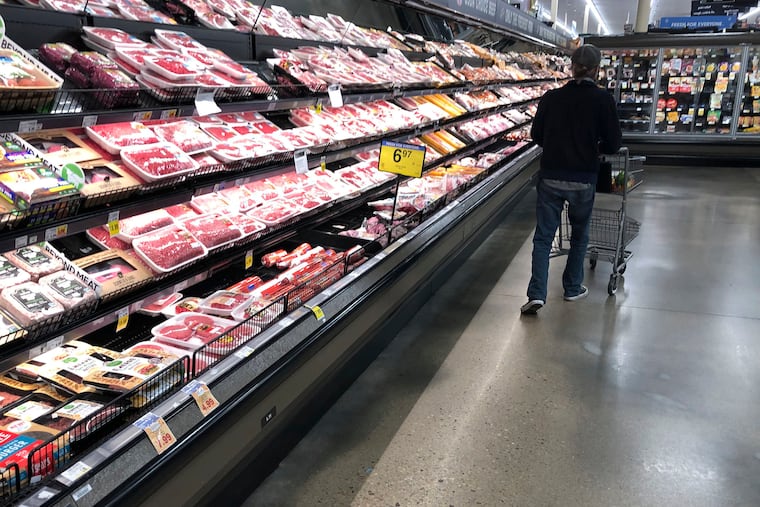April saw the sharpest increase in grocery store prices in nearly 50 years
Grocery prices showed their biggest monthly increase in nearly 50 years last month, led by rising prices for meat and eggs, the U.S. Bureau of Labor Statistics reported Tuesday.

Grocery prices showed their biggest monthly increase in nearly 50 years last month, led by rising prices for meat and eggs, the U.S. Bureau of Labor Statistics reported Tuesday.
U.S. consumers paid 4.3% more in April for meats, poultry, fish and eggs, 1.5% more for fruits and vegetables, and 2.9% more for cereals and bakery products, the Labor Department said.
Overall, consumers paid 2.6% more in April for groceries, the largest one-month jump since February 1974.
The jump in food prices came in a month when more than 20 million Americans lost their jobs, driving one in five households into food insecurity.
The increase in food prices was in marked contrast to a broader decline in the basket of goods that makes up the U.S. consumer price index, which fell .8% in April, the largest single-month decline since 2008.
The hike in cereal and bakery products was the steepest single-month increase on record, which goes back to 1919, according to Geri Henchy, director of nutrition policy for the Food Research & Action Center, a nonprofit organization working to eradicate poverty-related hunger and undernutrition.
She attributes the inflated prices to two things: a shift in where consumers are purchasing their food, and supply chain disruptions due to Covid-19 outbreaks in food production facilities as well as slowdowns related to social distancing and sheltering in place.
"It's a tipping point for people who are already really struggling with resources." she said. "Their budgets are taxed and now add increases in the price of food. There's been a big increase in food insecurity, which is twice as bad for people of color and families with young children. People can't go on with those lowered resources forever."
Food at home price increases normally lag behind those of restaurants and food service, according to David Henkes, a senior principal at food industry research firm Technomic. He says this was not the case this time because of the short-term shock to the supply chain delivered by the mass shutdown of restaurants and food service companies, which reduced demand by 90%.
"I do think this will probably continue for several months," Henkes says. "There are production issues in some parts of the food industry, and it's hard to realign the supply chain overnight. At the same time, each of these manufacturers and distributors needs to figure out how to start re-servicing restaurants and other food service establishments as they start to come back online, all of which will have an impact on supply, demand and ultimately pricing."
Henchy’s FRAC is calling on the administration to nearly double the minimum SNAP benefit from $16 to $30 per month and increase the maximum SNAP benefit by 15%. It is also calling for a suspension of all SNAP administrative rules that would weaken or terminate benefits.